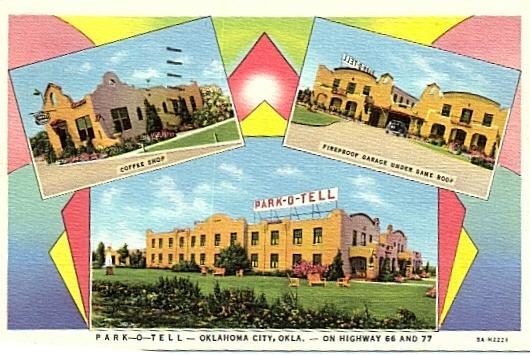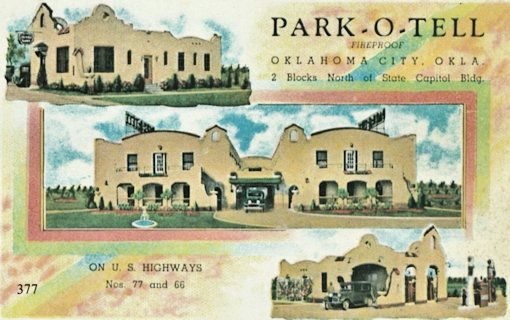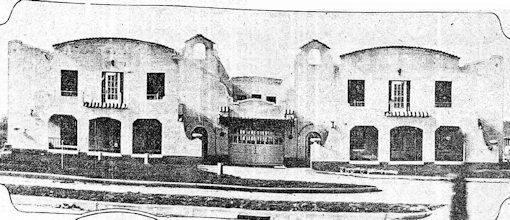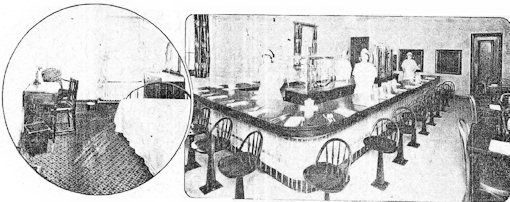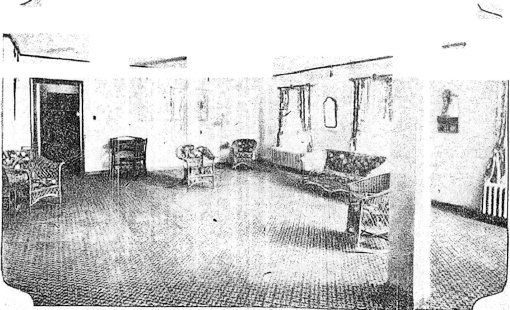Original article posted on July 20, 2006; major edit & update on April 9, 2010
This is my second post on North Lincoln Blvd. (the 1st being Beverly’s), and it’s about the Park-O-Tell, which one could subtitle, What? No wireless internet?
Nope. Back in those pre-internet and pre-cable TV days, probably even pre-color TV for the most part, the best you could get was, “Free garage under same roof,” “Air conditioned in summer, steam-heated in winter,” shown on the back of the 1940 postcard, below:
Click on the image, above, for its source pic
Since the original version of this article was posted in July 2006 and because of the motivation by the queries by KL of NYC (shown in the comments following this article), I’ve learned a bit more of the history of the Park-O-Tell which remains a point of interest to Route 66 aficionados around the country.
A 5″ x 7″ picture (matches not included) costing $25 of Park-O-Tell matches was once available at this location but the picture of the matches is now long gone since this post was originally made around 4 years ago. The Park-O-Tell is a part of the crazy “Route 66” phenomenon.
A pair of Park-O-Tell postcards appears in Vanished Splendor II by Jim Edwards & Hal Ottaway (Abalache Bookshop Publishing 1983) and they may also be seen at www.route66photographs.com and at www.playe.com — those shown below are from the Vanished Splendor II book — click on the images for larger views …
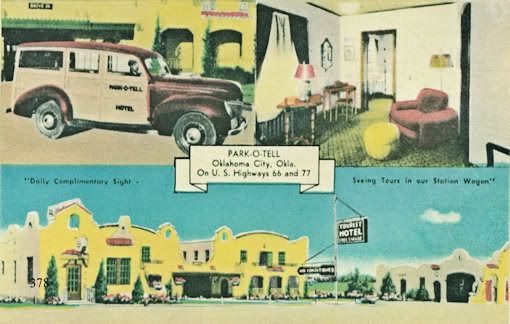
As I said in the North on Lincoln: Beverly’s article, I was on the debate team at Lawton High, graduating in 1961. In my 3 years at LHS, the team would travel to Oklahoma City fairly often and I think that we always stayed in the Park-O-Tell and always ate at Beverly’s. By time we were doing such things, the Park-O-Tell was very obviously past its prime — I don’t know its exact closing date but it was during either the 1960s or 1970s when Lincoln Boulevard was being expanded to circumvent the State Capitol.
But, on its opening day, February 9, 1930, a full-page spread in the Daily Oklahoman called it a “palace for tourists.” Click here to read that full page description. Parts of the article and images contained in it appear below.
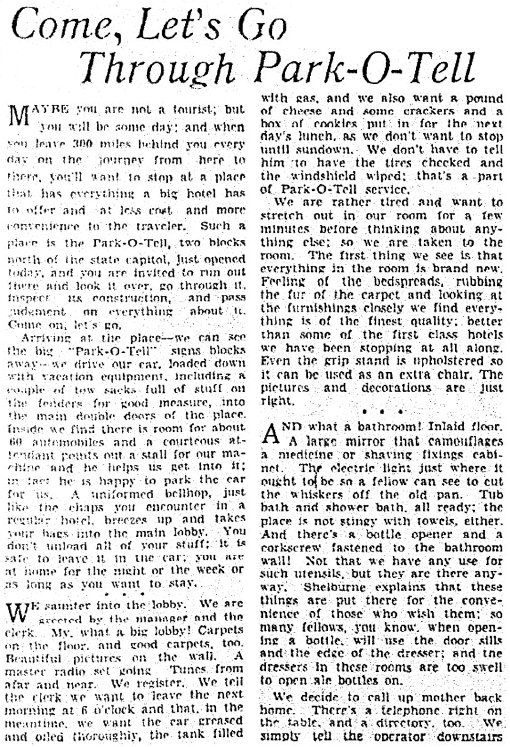
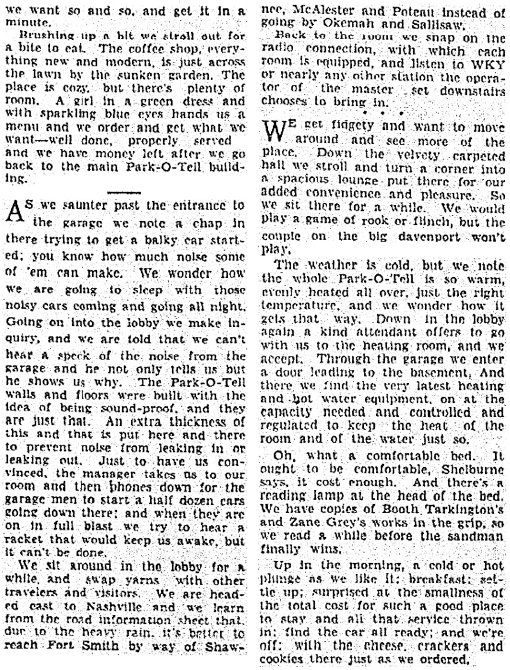
The following images show the Park-O-Tell most probably in the 1940s and are all from the Oklahoma Historical Center’s on-line public archives. Click on an image for a larger view.
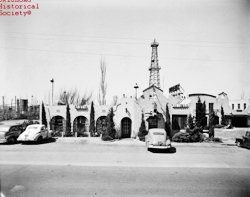 |
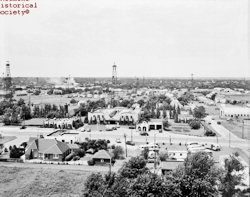 |
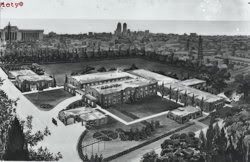 |
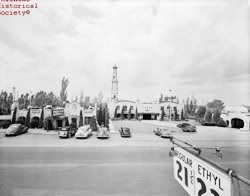 |
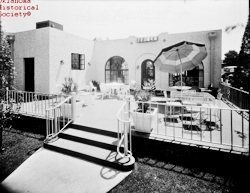 |
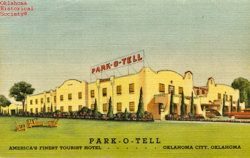 |
The Park-O-Tell complex in Oklahoma City was the first of a proposed chain of ten such units that were to be built north to Wichita and south to El Paso. The Daily Oklahoman called it a ‘Palace for Tourists’ on opening day, Sunday February 9, 1930. Completed at a cost of $185,000, the complex consisted of three Spanish-style buildings, facing east on Lincoln Boulevard, two blocks north of the State Capitol. Thee was a two-story hotel of sixty-eight rooms, along with a sixty-eight far garage; a coffee shop; and a gas station, which also housed a beauty parlor and barber shop. One patron remembered the convenience of ‘being in your room and snapping on the radio connection and listening to whatever the operator of the master set downstairs chose to bring in.’ There was also a special type of door used on the guest rooms. With a small knob the shutter could be regulated to permit air and light to enter the room without disturbing one’s privacy. Velvety carpeting, a spacious lounge, and soundproofing between the bedrooms and the garage area, and later, sightseeing tours in a station wagon … why, everything was ‘Jake’ at the Park-O-Tell.”
Where Was It? The Park-O-Tell was located on the west side of Lincoln Boulevard between NE 26th and NE 25th Streets. A 1949 Sanborn map shows its exact location and a contemporary Google map shows where it was located, both maps being shown below. Click on either map for a larger view.
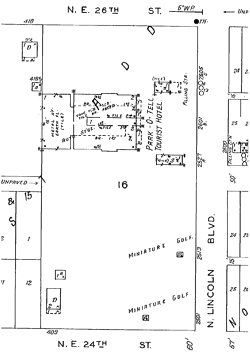 |
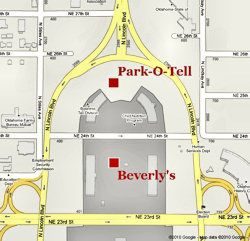 |
Though long gone due to developments surrounding Lincoln Boulevard and the State Capitol area, the Park-O-Tell’s and Beverly’s locations are shown in the right map.
Personal Experiences. In 1959-1961, I do recall having some of the best ever shaving-cream fights with my debate team members (one of whom died in the Vietnam War shortly later as well as with another, Mike Lewis, now a prominent Tulsa lawyer — I crashed his dad’s car while on a debate trip at Shawnee) up and down the halls and in the rooms of the Park-O-Tell. It’s not only amazing that we were not evicted from the premises, it’s amazing that we survived puberty. By the time we spent our time there, it was on its downside — we’d probably have been kicked out of the Skirvin. Regardless, my stints at the Park-O-Tell are a part of my personal history that I remember very fondly.
Damn Kids! What are they good for besides making way too much noise and others wishing they were not there?
Looking back, my best answer is, yes, I understand, but “Thank you, God, for a great childhood, and for these great Oklahoma City memories! I think, in retrospect, that not only do kids get the benefit of the doubt, old geezers, in their nostalgia, do, too!

